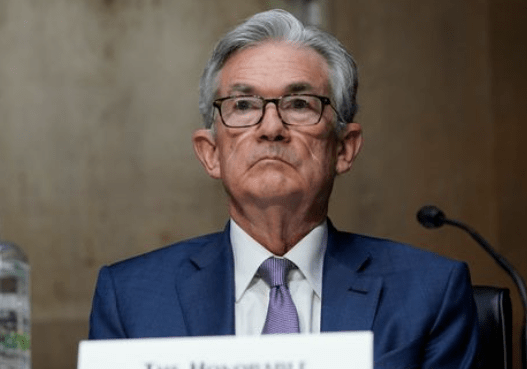A few days ago, I cleared my holdings, leaving only Ethereum in crypto; the risk is too high. Basically, it’s a situation where a lot of selling is happening at high prices, and there is significant market divergence. So, on the eve of the interest rate decision, what are the views of the three factions guiding the Federal Reserve, and which has the loudest voice and highest probability?
The results of the Federal Reserve's July meeting are about to be revealed, with GDP, PCE inflation, and unemployment data being released in quick succession. But what most moves the market is the escalating disagreement within the Federal Reserve over rate cuts. The three major camps are vying for power, making whether to cut rates in September a true 'suspense drama.'
[Core Disagreement: Positions of Three Major Camps]
Doves (immediate rate cut faction)
Assertion: A 25 basis point rate cut should have happened in July!
Reason:
Tariff impacts are 'internally absorbed' by companies (such as Nike and General Motors bearing over $1 billion in costs), and have not significantly pushed inflation higher.
The job market harbors hidden weakness (private sector hiring slows), waiting too long might harm the economy;
Representative figures: Fed governors Waller and Bowman (both have stated they will vote against at this week's meeting!)
Hawks (persistent wait-and-see faction)
Assertion: Inflation is not eliminated, and lowering interest rates is too early!
Key concern: The transmission of tariffs is merely 'delayed' rather than 'disappeared' (actual tax rates remain lower than the levels announced by Trump, and price increase pressure may erupt in the summer)
Inflation expectations may 'de-anchor'
If the public continues to worry about prices due to tariff news, price increases by companies and wage demands from workers will form a vicious cycle.
Representative figure: Atlanta Fed President Bostic (stating 'the inflation discussion has not dissipated, and the impact of tariffs may be long-term')
Centrists (September will determine everything)
Mainstream attitude: No action in July, possible action in September!
Core logic:
Need confirmation of two major risks in the next two months:
Are tariffs truly being absorbed by companies (as seen by San Francisco Fed President Daly)?
Is employment substantively weakening (to avoid 'over-waiting' that stifles the economy)?
The uniqueness of the September meeting: By then, it will have complete employment and inflation data for July and August, making decisions more prudent.
So the biggest problem is that Trump wants a rate cut as soon as possible. The issue is that what truly worries Powell and the centrists is the impact of tariffs on the market. If rates are cut, the market may repeat the situation after 2021, hence most people want to wait. They even want to see very clear data, and as time goes by, the costs borne by them and companies are enormous.
The cost of companies 'toughing it out': Nike's management warns of a 'billion-dollar profit loss,' General Motors pays over a billion in tariffs — but no one dares to raise prices first for fear of losing market share.
Countdown to inventory depletion: The low-tariff inventory hoarded by companies will eventually run out! Cost transfer is just a matter of time and may trigger autumn inflation.
Nightmare scenario for the Federal Reserve: If tariffs and inflation expectations work in tandem, the cost of policy correction will be high (refer to the violent rate hikes after misjudgment in 2021).
Powell is a centrist; after all, Powell is a very cautious person. So, if rates are not cut in July, it is not a big deal, because there are more important things ahead.
[This week's focus: Not just the Federal Reserve's decision]
Current market pricing indicates: No rate cut in July is a sure thing, but the probability of a rate cut in September exceeds 90%! However, four major events this week could rewrite the script:
Federal Reserve statement wording: Will Powell hint at a rate cut in September?
GDP data: If it shows economic resilience, hawkish voices will be stronger;
PCE inflation: Any unexpected rise will undermine rate cut expectations;
Unemployment rate: Behind the 4.1%, is there a hidden worry about labor force loss?
Three paths and market impact
Ultimately, based on a simple conclusion from these three scenarios, the probability of a rate cut in July is relatively low. What about September? What would happen in the market if a rate cut occurs?
Rate cut in September (highest probability):
Conditions: Inflation in the next two months ≤2.5%, unemployment rate exceeds 4.2%
Market reaction: U.S. stocks and bonds rise, the dollar faces short-term pressure.
Year-round inaction (Morgan Stanley's forecast scenario)
Condition: Inflation persists at ≥2.8%, and tariff costs are fully passed on.

Market risks: Double whammy for stocks and bonds, with the panic index VIX soaring.
Unexpected turn (Trump's pressure is a variable, but the possibility is very small)
If political pressure from the White House intensifies (such as threats to replace Powell), the independence of the Federal Reserve is challenged, which could trigger an 'emergency rate cut,' but the market would face a crisis of trust.
So the market is very divergent right now, including capital also withdrawing, etc. Therefore, remember to keep safe and sleep well, and wait for tomorrow's notice.